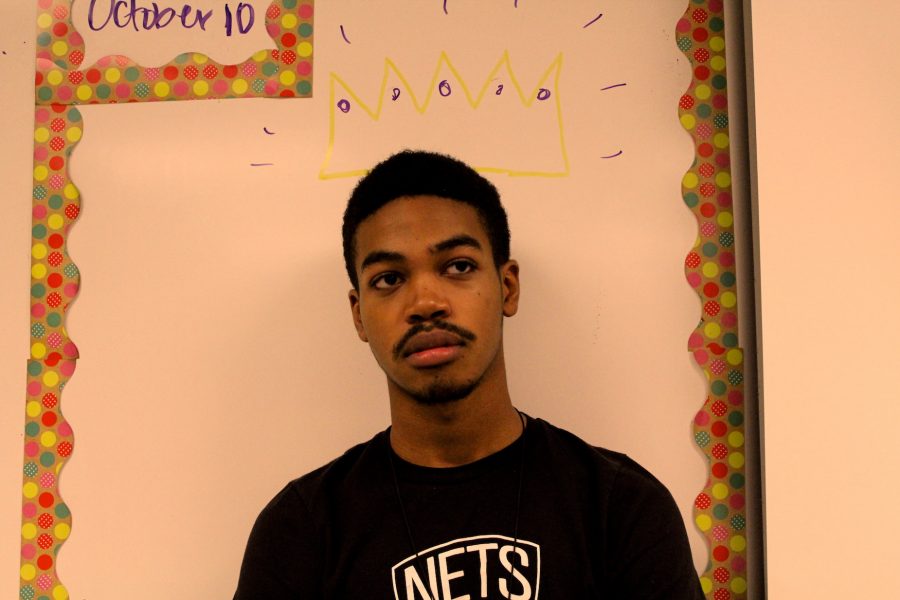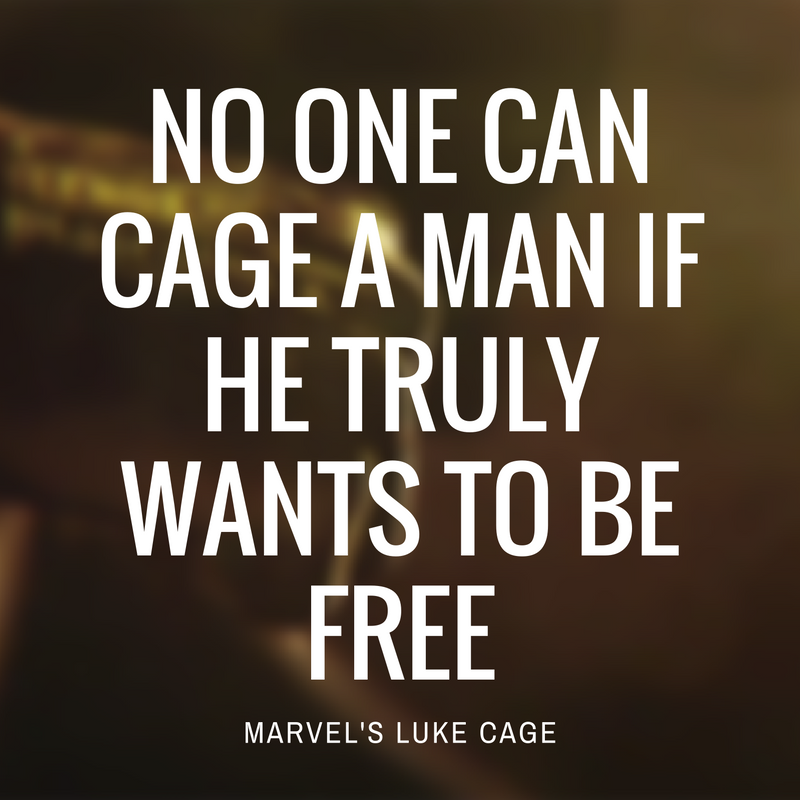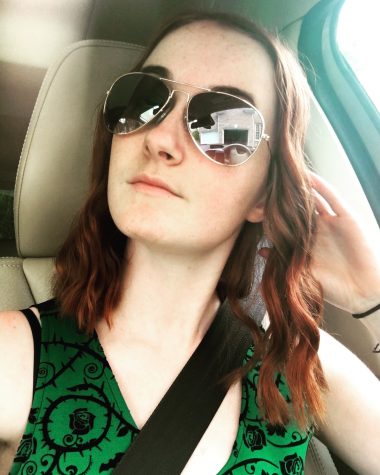Always forward, forward always: Netflix’s Luke Cage celebrates Harlem, but writing falls flat
Senior Jacob Jones basks in glory as he recreates a scene from Netflix’s new show Luke Cage, which premiered on the streaming service on September 30.
October 10, 2016
In a rapidfire release of its third installment in the The Defenders series, Netflix debuted the entire first season of its newest superhero drama, Luke Cage, on September 30. Teeming with the ambience of a bustling Harlem and dynamic characters, the series anticipated major success but faltered through a slow-moving plot paired with a wealth of conflicts that never see the light of day.
The show follows the super-powered titular character (played by Mike Colter) who boasts inhuman strength and skin impervious to (most) bullets; his battles with villains in Harlem play out most notably against gangster and bar owner Cornell “Cottonmouth” Stokes (Mahershala Ali) who works in cahoots with his cousin, councilwoman Mariah Dillard (Alfre Woodard), Hernan “Shades” Alvarez (Theo Rossi), and Willis “Diamondback” Stryker (Erik LaRay Harvey). Cage also finds solace and motivation through father figure Henry “Pop” Hunter (Frankie Faison), works closely with Detective Misty Knight (Simone Missick), and banters with Daredevil and Jessica Jones’ Claire Temple (Rosario Dawson).
Without a doubt, Luke Cage succeeds in presenting interesting characters with significant depth. Colter’s Cage combines human morality — he stands against guns, telling Pop that “everyone has a gun, no one has a father,” and treasures Ralph Ellison’s Invisible Man as he fights for the equality of all — with a dark backstory and a biting sass. His nods to the events of Jessica Jones and his past as a falsely-accused prisoner at the fictional Seagate prison all add to a character who faces constant moral challenges and stands up to each one with the power of a semi-truck.
The villains of the show also pair motivating backstories with sinister intentions. Ali’s Cottonmouth strengthens as the season goes on, starting first as a vicious boss who lets nothing slide and feels determined to make his club, Harlem’s Paradise, a representation of the people of Harlem. The more the show reveals, though, the more compelling he gets, and his role as a manipulator of Harlem, as well as his subsequent failures, become entrenched in his meaning of life. In addition, Dillard begins as a standard politician who wants nothing more than to improve Harlem and celebrate its history, but her involvement with Cottonmouth and her eventual unraveling lead her to dark places.
The single most impressive part of Netflix’s Luke Cage, though, lies in the show’s ambience. From the opening credits, the series strives to reflect the culture of Harlem in each aspect. Every wide shot of the neighborhood and reference to the culture that rose out of Harlem — Duke Ellington, Count Basie, Langston Hughes, and more — stay true to the character of the place. Scenes in Harlem’s Paradise feature famous artists Charles Bradley, Jidenna, and Raphael Saadiq as a nod to the blaxploitation era that spawned the comics, and buildings like Mount Olivet Baptist Church and the United Palace Theater feature as beautiful scenery. The show’s ties to the neighborhood do not place the show into a niche so much as they celebrate the character’s comic book origins and African-American culture as the backdrop for the storytelling.
Still, the writing fails to allow the show to reach its full potential. As every series in Netflix’s Marvel lineup, Luke Cage starts off slow. While it does turn tables early on, the events do not catapult the storytelling into the same binge-worthy fervor as in Daredevil’s season one or Jessica Jones. The entire season felt more like 22 episodes than 13, falling back on too much exposition and not enough action. When compared to Marvel’s other shows, I felt myself searching for a story arc I could care about and wondering how each character would interact with others, but never finding the satisfaction of a fast-moving action show.
Furthermore, the dynamics between characters and the conflicts the show presents fall flat. Creator Cheo Hodari Coker works up moments of anticipation throughout the season, but resolves them so quickly that the conflicts feel washed out. Character relationships confused me, as with Diamondback’s dogged persistence of Cage, Shades’ involvement in the scheme, and almost all of Detective Knight’s arc. The action scenes, while some function as fun ways to show off Cage’s superpower as he takes out large numbers of baddies without breaking a sweat, fall prey to becoming political debates without any long-lasting effect. With such great character development, the lack of conflict leaves characters stagnant and the audience quickly grows bored.
Even with the downfalls of Luke Cage, Marvel has set up a character with the physical and mental ability to effect change; Cage’s honorable dedication to equality and the beautiful representation of Harlem help the show shine. As Cage’s character moves on to join the upcoming superhero team The Defenders, Marvel seems to be on track toward a group of compelling superheroes taking on serious issues and perfectly embodying Pop’s philosophy: “always forward, forward always.”
The Chant’s grade: B+









Joyce Beckham • Nov 10, 2016 at 8:00 PM
Great Show ,,,, I loved it, the action, the music and the characters.
Sadly, Diamondhead or bCk or whatever was truly engaging…
Glad they didnt kill his crZy tail … he will bring lauvhs and keep it interesting…
ant wait.to zee what he has in store for Mariah and Shades..
Hurry with sequel …. the writing and storyline were very good…The ending was truly surprising..
Christopher Sawyer • Nov 1, 2016 at 10:52 AM
Hi,
I watched Luke Cage recently and I loved the show. I found it thoughtful and engaging, and the action had the right touch. I didn’t have the expectation of anticipation as with other Marvel shows with regard to the action (I wasn’t expecting a supervillan fight every 20 minutes, but I enjoyed them when they happened). This show did have many very satisfying well-rounded characters. I have never seen this level of storytelling with all African American characters and found it engaging. I like that Pop’s barbershop and the Harlem Renaissance were central backdrops that showcased the feel of the stiry, and did not find that the performances at the Renaissance were a distraction to the storytelling. It added the right flavor. The dialogue styles also added richness to the flow of the episodes, from it’s “realness” in defining the characters, culture, and delving into current issues. I like this show.